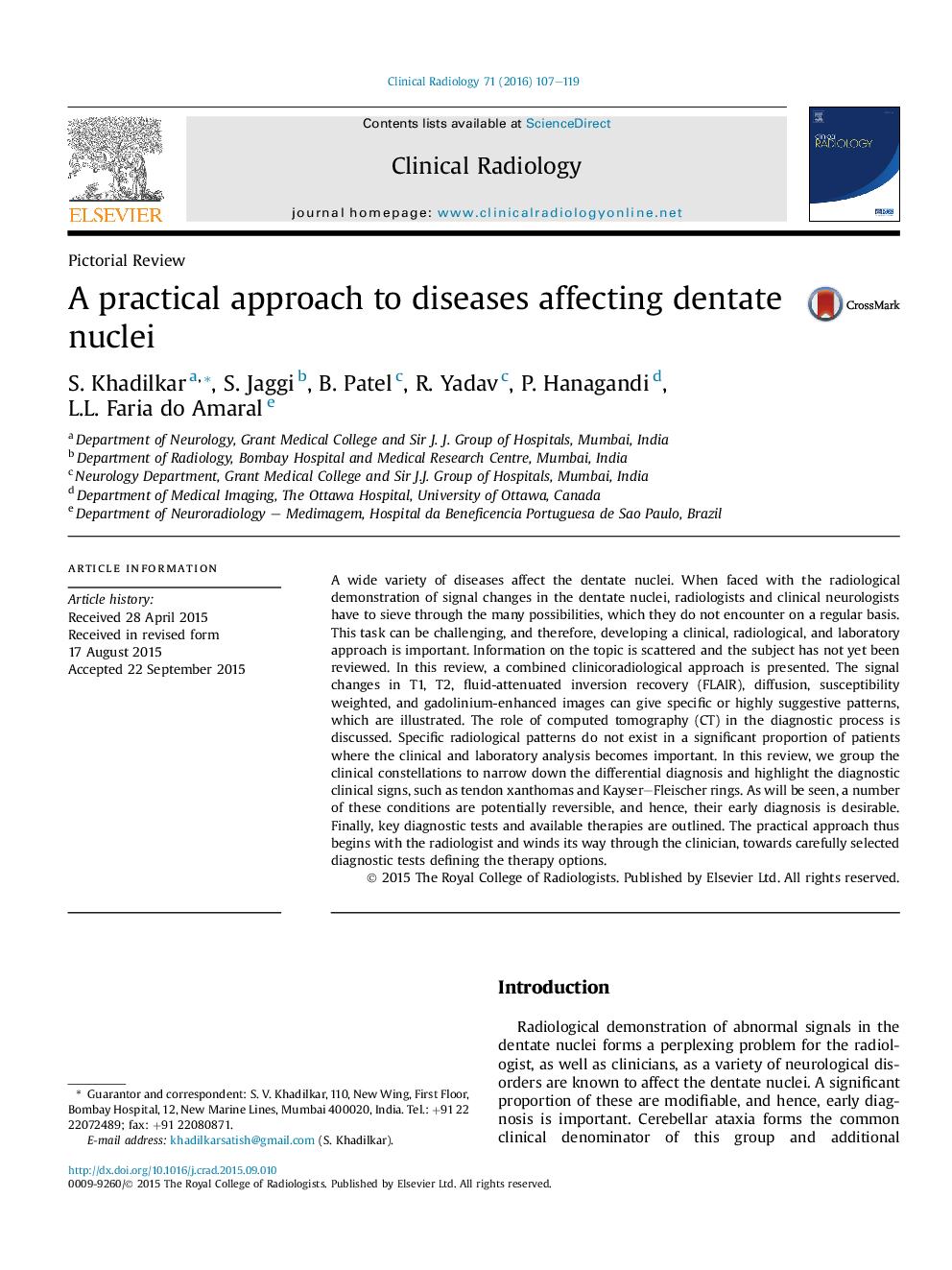| Article ID | Journal | Published Year | Pages | File Type |
|---|---|---|---|---|
| 3981456 | Clinical Radiology | 2016 | 13 Pages |
•Dentate nuclei are affected in leukodystrophies, metabolic, toxic, neurodegenerative, inflammatory and infectious diseases.•A number of these diseases are modifiable or reversible and hence it is important to diagnose them early.•Clinical or radiological tell-tale markers are present in a proportion of them.•In others, a practical approach beginning with radiology and taking help of clinical and laboratory features helps the diagnostic process.
A wide variety of diseases affect the dentate nuclei. When faced with the radiological demonstration of signal changes in the dentate nuclei, radiologists and clinical neurologists have to sieve through the many possibilities, which they do not encounter on a regular basis. This task can be challenging, and therefore, developing a clinical, radiological, and laboratory approach is important. Information on the topic is scattered and the subject has not yet been reviewed. In this review, a combined clinicoradiological approach is presented. The signal changes in T1, T2, fluid-attenuated inversion recovery (FLAIR), diffusion, susceptibility weighted, and gadolinium-enhanced images can give specific or highly suggestive patterns, which are illustrated. The role of computed tomography (CT) in the diagnostic process is discussed. Specific radiological patterns do not exist in a significant proportion of patients where the clinical and laboratory analysis becomes important. In this review, we group the clinical constellations to narrow down the differential diagnosis and highlight the diagnostic clinical signs, such as tendon xanthomas and Kayser–Fleischer rings. As will be seen, a number of these conditions are potentially reversible, and hence, their early diagnosis is desirable. Finally, key diagnostic tests and available therapies are outlined. The practical approach thus begins with the radiologist and winds its way through the clinician, towards carefully selected diagnostic tests defining the therapy options.
